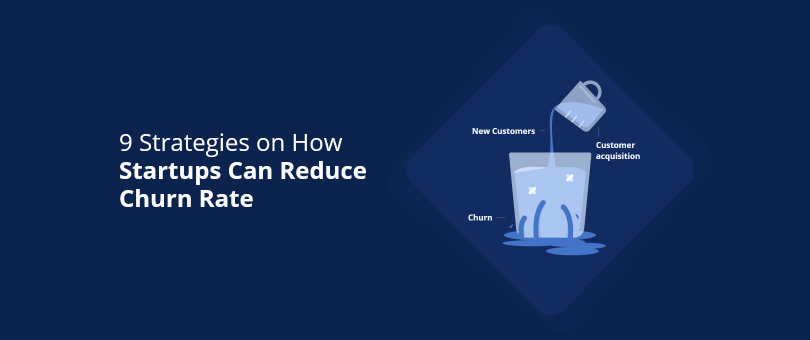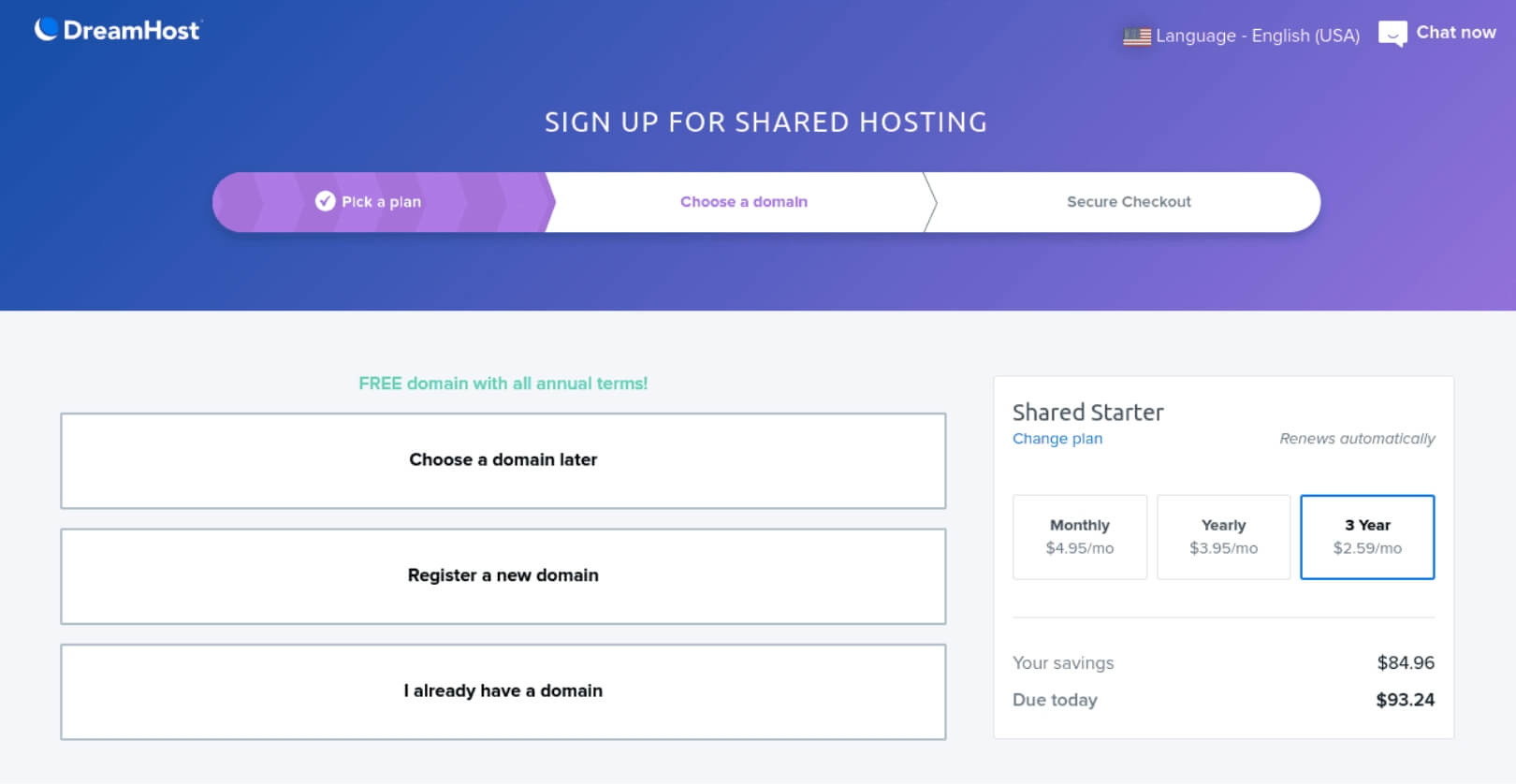When you are starting up a new business, it’s always a good idea to monitor important KPIs and make sure that you’re on the right track. One of the most interesting metrics to keep an eye on is the churn rate. Although trying to estimate the velocity of customers leaving you might not seem an exciting venture at first, it can give you valuable insight into the way your business is running. What’s more, while working to reduce churn rate, you might actually find new ways to grow your business and make your products better.
But what does churn mean in business?
What Is Churn Rate?
Churn rate shows the number of customers who leave your business or cancel their subscription after using your services for a set period of time.
Measuring and analyzing your churn rate can tell you a lot about your relationships with your customers and the quality of your product. However, client churn shouldn’t discourage you. Of course, it’s never pleasant to watch people leave but churn happens. All companies face it, regardless of whether they are startups or have been on the market for years. What’s important is to identify the problems that caused it and make timely adjustments.
Before diving deeper into the ways you can reduce the churn rate for your startup, let’s first discuss the different types of customer attrition.
Types of Churn
There are many ways to measure the churn of a company, though none of them can tell you enough on its own. If you want to have a clear idea of your customers’ behavior and its impact on your revenue, it’s best to calculate all of the types of churn listed below. By tracking them regularly, you’ll eventually find out which of them are the most relevant for your business.

- Customer Churn. This is the basic type of churn that most people track at first. It shows how many customers have left your business over a set period of time, without taking into account any other factors.
- Revenue Churn. What’s more important than just knowing how many clients have left, is understanding what impact their abandonment has on your business. This type of churn shows how much revenue you’ve lost because of canceled subscriptions over a set period of time. You might have a low percentage of overall customer churn but you will suffer enormous losses if the customers leaving are your top buyers.
- Net Churn. This type of churn can actually be good for your company. If you are managing to upsell your product right to your existing clients, the revenue you gain can exceed the losses from customer attrition. This way you get negative churn, which is per se the best kind there is.
- Monthly Churn. When you offer contacts of different lengths, it’s best to calculate churn separately for each type in order to receive accurate results. Monthly churn shows you the customers on short-term contracts who left your business over a set period of time. However, if you make the equation based on all existing contracts, including yearly ones, you will get falsely decreased results. People with a prepaid long contract rarely terminate it in advance and compared to those on a short-term contract they churn less often.
Each type of churn gives you a different perspective on the issue of customer attrition. However, it also opens doors to better segregation and more solutions.
Strategies to Reduce Churn
Measuring and tracking the rates of people leaving your business is what seems like an overwhelming row of calculations, equations, and numbers. Reducing churn, on the other hand, is all about studying your clients and taking good care of them.
Following closely how your relationship with your customers is evolving, and how they are using your products, will give you valuable information. You can use it to improve your products and services and to make it more likely for customers to stick around.
Here are some of the best strategies you can use to reduce churn rate and grow your startup company:
1. Encourage Feedback
Asking for feedback is the first thing you should do when a client leaves your business. In order to reduce churn, you have to understand what’s driving people away.
There will probably be some things that you cannot fix but that you should always keep track of anyway. You may find a pattern and this could help you identify major pain-points. Once you’ve learned the reasons, you will know where to focus your efforts and will be able to work on making improvements.
2. Offer Enticing Long-Term Contracts
The difference between short-term and long-term contracts can tell you a lot about a customer’s intentions. Both have their benefits that shouldn’t be overlooked.
Short-term contracts (as well as free-trials) can attract potential customers who are not sure if your product is what they need. If they like what they get, they stay, if they don’t – they leave. These types of offers let you grow your client network and that’s good for a startup. However, they usually have a very high churn rate and can cost you more resources than the profits they provide.
That’s why, in order to reduce churn and keep customers around, you should also design attractive long-term deals.
Long-term contracts have a lot of benefits for your business. The best one, of course, is that you receive the payment in advance. And immediate cash is something every startup can appreciate.
Also, your customers will stick around for a longer period of time. The initial investment is larger, which makes it less likely that they will just leave. When considering the long-term option, prospects will probably do better preliminary research on your services and will make an informed decision. This makes them more inclined to explore the full benefits of your products and be more invested in your business relationship.
What’s more, you will also be given a longer period of time to study them and find out what they like and dislike about your product. The data you gather can be invaluable for your business and product growth. It will also allow you to fix any issues immediately and prevent customers from leaving.
This way you will not only reduce your churn but can retain viable customers.
3. Use Customer Segregation
Not all customers are equal, and as mentioned, losing big clients is not the same as losing small ones. As a startup, your top buyers are who’s keeping you in business, and prioritizing taking care of them is essential.
That’s why when analyzing your business’s performance and working to reduce churn, you should make sure to focus on the big fish first. Your client churn might remain high, but your revenue churn will drop, and that’s what’s more important.
Segregate your clients by contact length and by revenue, and apply different strategies to fit every case. It might seem like a lot of work, yet it’s achievable and will pay off. By managing to retain big clients, your business will grow steadily and that’s crucial for a startup to survive.
4. Monitor Customers Behavior
By monitoring customer behavior, you will be able to identify which customers are not using your products to the fullest. If they are not taking advantage of most of the benefits they can offer, chances are they might not find them useful enough and quit using them. You can try to fix this, by sending your clients email updates with useful information on how their business can benefit more from your product and what they are missing out on.
Also, try to notice when customers make a subscription to your products but do not start actively using it in the first month. Maybe they just couldn’t figure out how it works, or they’ve encountered other issues. By sending them some how-to hints and tutorials, or other onboarding information, you can help them overcome any problems. This can make clients stick around when they are ready to leave.
Following closely how your customers interact with your product can help you foresee their next step. This will give you time to improve their experience with your product and reduce churn.
5. Provide Customer Engagement
Staying in touch with your customers will help you to keep them engaged and keep them around.
Try to maintain an ongoing conversation on social media, provide useful resources and work to always keep your clients in the loop. This will help you build a community of customers and will help people feel more personally engaged with your business. Having a deeper connection to your company will make them less likely to walk away over small issues.
What’s more, by maintaining an active conversation with your clients, you’ll always be informed about what they like and dislike about you. This will allow you to improve your product, fine-tune your communication, and might even give you new ideas on how to grow your business. And, of course, it will help you to reduce churn.
6. Keep the Information Flowing
Another way to keep your customers engaged is by maintaining a blog with useful information related to your product.
Write helpful articles on topics related to your business and offer solutions to common pains your customers encounter. You can also use this platform to provide onboarding tutorials and tips to send to new customers and advanced tips for regulars. Easily accessible information that helps people fix issues without having to ask, makes them feel cared for, and shows them that you are always thinking ahead.
This might feel a bit abstract in regards to reducing churn, but keep in mind that happy customers who know they are important to you are less likely to leave.
7. Have Reliable Customer Support
When you are just starting your business you are often understaffed. Tasks pile up, emails remain unanswered, and there is no way to do everything at once. However, the one thing you should never overlook and leave for later is customer support.
Clients who need your attention and have to wait too long to receive it will simply leave. Especially new ones who usually have the most questions to ask. They have no reason to cut you some slack since in their minds they’ve given you a chance and you are neglecting them.
The first thing you should do to avoid having to answer the same simple questions over and over again is setting up a FAQ page. This will save both you and your customers time and frustration.
Also, consider using a chatbot as an after-hours option in order to provide a 24/7 service for every quick question your customers have in mind.
However, make sure to have real-people available during office hours. You can make a schedule where your team members and you take turns covering customer support while keeping up with other tasks. The important part is to always have someone available to chat and help. This shows a more personal approach and will give you another opportunity to stay in touch with your customers and understand their needs.
By asking the right questions you’ll find a lot about how they feel about your products and where you are in your B2B relationship, so to say. If they are not happy and you don’t manage to fix this, it’s a safe bet you will probably see clients walk away very soon.
Managing to solve their issues will not only help you reduce churn, but it will help you build a connection.
8. Make Sure Your Marketing Is on Point
If it happens too often that customers are buying your product but not using it and quitting after the first month, maybe it is not what they’ve expected it to be.
Investigate if it’s possible that your marketing team is setting unrealistic expectations for the product or is sending a confusing message. You shouldn’t try to oversell your services because the disappointment that follows will cost you customers and an increasing churn rate.
It can also add up to a negative reputation and that is even worse.
9. Upsell Your Product
A good way to neutralize churn is to try upselling your products. You can do this by choosing to focus on the happy clients, and convincing them to invest in product upgrades and next-level packages. This way, the revenue you receive from existing customers might start to exceed the losses from those who leave.
This strategy will, technically, not reduce your churn, but it might help you catch the churn-unicorn and achieve the negative attrition every startup is dreaming about.
While it gives you yet another reason to take extra good care of your big clients, relying solely on this approach might not be the best decision for your growth. Depending on just a few profitable accounts can be risky, for if anything happens to them your losses will be massive.
All in all, you shouldn’t give up on the unicorn, but it’s best to stay on the safe side and work to reduce all types of churn.
Recap
Battling churn is all about knowing your clients better and improving your services. If you focus only on the numbers and forget that there are real people (and companies) behind them, you might never find a way to fix the issue.
There are many reasons why customers might choose to terminate doing business with you. Clients walking away are usually a red light that says there is something you need to fix.
Trying to understand your customers and their needs, and staying in touch with them will give you valuable information about how your company is doing. If your clients are happy, you are on the right path. If they are leaving, you should find out why and work to make them stay.








